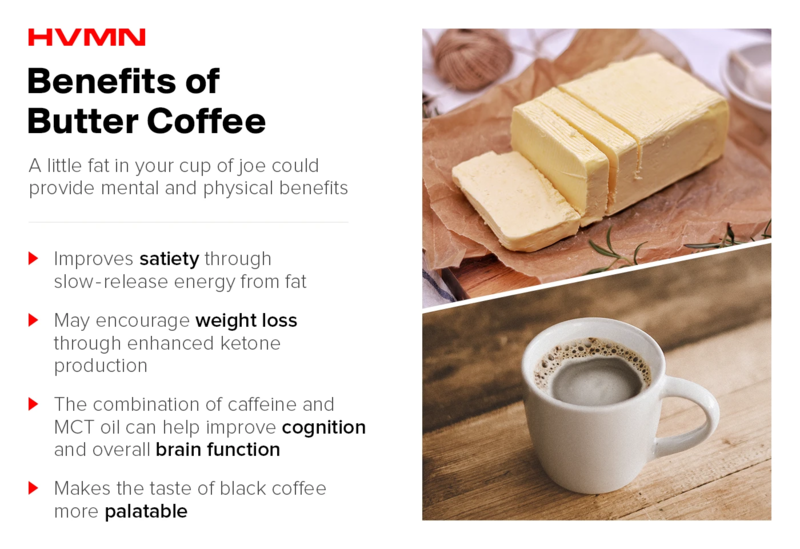Ketones in Urine: All You Need to Know
878
0
·
2019/08/11
·
16 mins read
☕
WriterShelf™ is a unique multiple pen name blogging and forum platform. Protect relationships and your privacy. Take your writing in new directions. ** Join WriterShelf**
WriterShelf™ is an open writing platform. The views, information and opinions in this article are those of the author.
Article info
Categories:
⟩
⟩
⟩
⟩
Tags:
Date:
Published: 2019/08/11 - Updated: 2020/05/27
Total: 3866 words
Like
or Dislike
More from this author
More to explore












Originally published on HVMN by Brady Holmer.
Years ago, those doing the low-carb, high-fat ketogenic diet represented a small subset of the population. Not anymore. The prevalence of people doing keto has increased exponentially; even your grandma might be saying, “I’m thinking of giving this keto thing a try.”
The increased popularity is for a good reason; several health conditions have been shown to benefit from a low-carb, high-fat lifestyle, including but not limited to neurological disorders, diabetes, polycystic ovary syndrome (PCOS), acne, and respiratory and cardiovascular disease risk.1
This has led to the creation of a variety of consumer products that can be used to measure ketones, which are produced by the body when someone practices carbohydrate or calorie restriction. Data nerds love this, and so do people who like to have concrete feedback about progress. Having something to measure and track is always great, and can help lead to compliance and better results.
If you are someone who is thinking about going keto, or interested in starting to measuring ketones (if you haven’t before), one way to do this is through urine test strips. Read on to learn everything you need to know about testing for ketones in the urine.
Ketosis and Ketone Metabolism Fundamentals
Ketosis is a physiological state that occurs when the body begins to rely on fat-sources for fuel instead of carbohydrates. This happens when carbohydrates are restricted and blood sugar falls, which might be achieved through a low-carbohydrate, high-fat ketogenic diet, fasting, and even prolonged exercise.
During ketosis, the ketone bodies beta-hydroxybutyrate (BHB) and acetoacetate (AcAc)are produced from fatty acids. Fatty acids are released from our internal stores when blood glucose is low. The circulating fatty acids then go to the liver for ketone production. Once these ketones are produced, they can be shuttled through the circulation to other tissues, where they’re taken up and metabolized for energy.
Usually, ketosis is defined as having blood ketone levels greater than 0.5 millimolar (mM). If you really want to know if you’re in ketosis, measuring your ketones is the way to do so.
Why You Should Test for Urine Ketones
Before going into the process of measuring for urine ketones, let’s discuss the reason why we are able to even measure urine ketones in the first place. Aren’t ketones present in the blood?
For the most part, yes.
Glucose, ketones, and other crucial nutrients like minerals are present at varying amounts in the blood. Eventually, blood (and the small-molecule passengers) will pass through the kidney—our body’s filtration system. In the kidney, small molecules are filtered into the urine, while others are reabsorbed back into the circulation.2 This process is important, especially when we are talking about ketones. This reabsorption process prevents what would essentially be a “waste” of energy. You can’t utilize ketones if they’re flushed down the toilet.
At low concentrations, most ketone bodies are reabsorbed by the kidney. However, when blood ketones begin to rise, some ketones (the ones not being utilized) begin getting filtered out. Thus, ketone bodies show up in the urine.
For this reason, if you’re on a keto diet or fasting (i.e. in a fat-burning state) and producing ketones, a simple urine test may provide a quick snapshot of your endogenous ketone production—a proxy for how much fat you’re using.3 That is, higher ketones mean more fat burning.
What about exogenous ketosis? Another way to get into ketosis is using exogenous ketone supplements (like BHB, which is the ketone body in HVMN Ketone Ester). Does urine testing work for ketosis achieved this way?
It turns out, urine testing might not be ideal to test for ketosis achieved using ketone supplements, for a variety of reasons. We will discuss these later on.
Who Should Test?
Anyone can use urine testing, but this method may be particularly useful for two types of individuals.
The group that comes most quickly to mind might be people on a ketogenic diet. And yes, urine test strips might be a great introduction to ketone testing for keto-dieters everywhere, with one caveat.
The reliability of urine tests strips is greatest during the initial phase of a ketogenic diet.
Keto-adaptation might have an influence on test results (read on to find out more about this). Anyone experimenting with fasting or trying to lose weight could also use urine test strips to get a reading on their ketosis level, and perhaps use them as a guide to plan an effective strategy.
Individuals with type I diabetes are sometimes advised to measure urine ketones as well. This might seem odd, but it’s a potentially crucial part of their disease management.
This is because people with type I diabetes can suffer from a condition known as diabetic ketoacidosis (DKA), where large amounts of ketones build up in the blood, causing it to become acidic.4 A positive urine test for ketones in someone with type 1 diabetes (T1D) might be a warning signal of DKA.
But if ketones are so “good”, why is DKA so harmful?
Ketosis vs. Diabetic Ketoacidosis
It’s crucial not to confuse these two terms, as keto diet “haters” and the media have occasionally (and incorrectly) done. Yes, both conditions involve high blood ketones, but their physiology and effects on the body are vastly different.
Physiological (nutritional) ketosis is harmless (beneficial, in fact). Physiological ketosis is the goal of any ketogenic diet or taking exogenous ketone supplements.
What defines ketosis exactly?
As mentioned, when blood BHB levels of >0.5mM are achieved, one is said to be in ketosis. Ketone levels can reach up to 7mM - 8 mM in some instances in healthy individuals.5 However, it seems like levels don’t get much higher than this (under normal conditions). The body’s feedback mechanisms involving several different hormones serve to regulate endogenous ketone production.6
The evidence is clear that physiological ketosis has substantial health benefits, maybe due to the fact that ketosis seems to activate certain “survival” pathways in living organisms. In fact, ketogenic diets have been associated with longevity (in mice).7,8
In addition, ketones are an efficient superfuel which have been shown to yield health benefits like weight loss, improved glucose control, better blood lipid profiles, mental clarity, and even improved athletic performances in some cases9,10,11,12 Long story short, humans seem to benefit from both endogenous and exogenous ketosis.
Diabetic ketoacidosis (DKA), on the other hand, is something to be avoided at all costs! Rather than beneficial, it’s a medical emergency.
DKA is an abnormal and potentially fatal metabolic condition, where not having enough insulin around (which type I diabetics don’t produce) leads to an inability to shuttle blood glucose into muscles and other body tissues for energy. This leads to high blood glucose levels,13 which, on one hand, can lead to fluid and electrolyte imbalances.
But, with low insulin (despite a high blood sugar level) also comes the metabolic signals that tell the liver to start using fatty acids to produce ketone bodies.
The perfect macronutrient calculator for keto
Maintaining balanced macronutrients is a challenge. Subscribe, and we'll send you our easy-to-use macronutrient calculator to track all your food.
Normally, insulin inhibits this signal. High levels of ketones start to accumulate in the blood, often exceeding 20mM or higher, levels drastically above normal fasting levels.3 Ketones are mildly acidic, and this can cause the pH of the blood to drop, making blood more acidic. If not treated, this can be life-threatening, leading to coma and even death.14
Some signs of DKA include dry mouth, excessive thirst, frequent urination, fatigue, nausea, vomiting, abdominal pain, a racing heart beat, and rapid breathing.13
For type I diabetics, urine ketone testing can be invaluable. They’re often advised to measure urine ketones frequently in order to manage their condition. The American Diabetes Association (ADA) recommends testing for ketones if your blood glucose is over 300mg/dl, you feel nauseated, you’re sick or tired all of the time, you have a very dry mouth, or if your breath smells fruity or resembles nail polish remover and you feel confused or “in a fog.” These all may be signs of DKA. People with type 2 diabetes may also benefit from urine ketone testing.
How to Test for Urine Ketones
The ketones BHB, AcAc, and acetone can all be measured in various ways, depending on where each will be the most present. BHB is commonly measured using a blood test/meter, and acetone can be measured using a breath ketone meter.
AcAc is the ketone that is measured when you do a urine ketone test. This method won’t tell you (directly, at least) anything about blood BHB.
The process of urine testing for ketones is relatively straightforward. The first step involves purchasing urine test kit, which can be purchased over-the-counter from most drug stores or ordered online. After you have the test meter and urine test strips, all that is required is a few additional steps (to the bathroom).
To get a reading, pass the testing side of the strip through a urine stream, or dip the strip into a sample of urine and remove immediately. After 15 seconds, match the end of the test strip to the ketone color chart on the container.
Different brands of strips may differ in their exact color-coding, but generally a dark purple color is used to indicate the highest level of ketones. Test strips also have a color corresponding to a “negative” test—these results mean no ketones were detected.
It’s important to follow the 15-second rule. After this period of time, the color may continue to change further, leading to a result that doesn’t match up with reality.
When Should You Test?
The time of day you test might depend on what your goal is, or what you’re trying to see from the reading.
Studies have suggested that the reliability of urine ketone testing increases when the test is done in the early morning or in the late evening several hours after dinner.15,16Wondering how they figured this out? Participants had to provide urine samples for a full 24-hours. Be happy you weren’t part of that study.
Whether you choose to measure at the suggested times or at a different point in your day, it’s probably best to pick a testing time and stick with it for consistency.
Advantages of Urine Ketone Testing
For the cost-conscious, urine testing is one of the cheapest ways to measure ketosis. Typically, a pack of 100 test strips can be purchased for around $10. Plus, urine test strips don’t require a fancy meter to read results—they’re displayed right on the strip.
Urine testing is also super convenient. For one, the strips can be easily purchased. Testing is quick, seamless, and can literally be done anywhere, at any time. And if the thought of sticking your finger multiple times a day makes you queasy, no need to fear. Urine ketone testing is non-invasive—no blood required! It’s a less expensive alternative to other methods of testing ketones.
Disadvantages of Urine Ketone Testing
Something not provided by urine ketone testing? Concrete numbers.
If you like hard data end-points to measure ketosis, urine testing might not be for you. Rather than a concrete number, urine strips give only a semi-quantitative measure of blood ketones, with colors on the strip corresponding to “trace,” “moderate,” and “large” amounts of ketones. Therefore, the test is somewhat subjective.
Many external factors can influence your urine ketone reading, and these could provide a reading higher or lower than what your actual ketone levels might be.
For instance, hydration can influence readings. If you’re under-hydrated, ketones might read high, and vice-versa for someone who’s “over-hydrated.” Certain medications and vitamins (in particular vitamin C) can also skew the results.3
Urine testing may also be a poor way to measure ketosis achieved exogenously. Here’s why.
HVMN Ketone Ester (containing the ketone body BHB) will result in rapid, high ketone levels, equivalent to a multi-day fast or weeks of ketogenic dieting.17 But since we’re testing urine, those rapid increases in blood ketone levels won’t show up in the urine tests.
Most are used for energy, and the pattern of metabolism is quite different from that of endogenous ketone production. Only a small amount of exogenous ketones are excreted.17 It has also been shown that at higher blood ketone levels, urinary ketones no longer correlate with blood BHB.18
As we will discuss later, urinary ketone testing might become less accurate over time, such as if you consistently follow a ketogenic diet for many weeks or months.
Urine Testing and Keto Adaptation
Maybe you’ve been using urine test strips for a significant amount of time to measure the success of your ketogenic diet, and now begin to notice a change in your results, despite your habits staying relatively the same. Don’t blame the strips.
In this case, your metabolism has just changed, something reflected in the strips. When you initially start a low-carbohydrate diet, you’re teaching the body to rely on fat-based fuel sources rather than carbohydrates, which most of us have been using as our primary energy sources for our entire lives.
This necessitates an adaptation period (which can sometimes lead to the “keto flu”), and so for the first few days or weeks of a ketogenic diet, you won’t be great at efficiently producing or utilizing ketones for energy. Despite producing some ketones, you aren’t quite yet a proficient “fat burner.”
This is why ketones will appear in the urine. Since they all aren’t being used, they’re filtered into the urine, rather than being reabsorbed or utilized.
But, after some time on a ketogenic diet, keto adaptation will occur—you’re now more capable of producing and using ketones. At this point, it is possible that a larger amount of ketones are reabsorbed and used for energy, and less will appear in the urine.19 One study indicated that during fasting, the amount of AcAc and BHB increased exponentially as the fast grew longer.19 The same study indicated that there exists no maximal transport rate in the kidney for AcAC during physiological ketosis. That is, our ability to reabsorb ketone bodies might have “no limit.” Furthermore, the increased reabsorption of ketones was shown to minimize the loss of body protein during starvation. Although this study didn’t use people in a keto diet, the same concept might hold true. This is definitely a beneficial adaptation during periods of starvation, since during an actual food shortage, the body would need to conserve more ketone bodies and we might see the same thing in those adhering to a keto diet.
As you become more keto adapted, skeletal muscle actually starts to oxidize fatty acids directly. This then leaves more ketones available for our big juicy brains, and other organs that can’t use fats20,21 This means that someone who is better at using ketones will get a lower result on a urine ketone test than they should, maybe even a negative result. Where blood testing might give a high ketone reading, urine test strips might tell another story.
In summary, over time, urine testing becomes less accurate than blood ketone testing.
Quick Tips for Urine Ketone Testing
If you want to improve the accuracy and reliability of your results, there are a few key tips you should follow if you plan to use urine ketone test strips.
Most obvious is that you should consistently check and stay up-to-date on the expiration date on the urine test strips you’ve purchased. Typically, test strips will expire within six months of opening the bottle. Don’t use your urine test strips if the date on the bottle has passed.
Storage is important too. Make sure that you store test strips with the lid closed tight, and keep the bottle in a cool, dry place. Any excess heat or moisture can influence the strips and the chemicals they contain. Do not store in the refrigerator, and protect them from direct sunlight and heat.
Don’t remove the desiccant in the bottle—that’s the tiny white packet. The desiccant holds something called silica gel, which absorbs and holds water vapor, limiting moisture that could potentially ruin the urine test strips.
During testing, make sure you aren’t overly hydrated, and similarly make sure you aren’t dehydrated, as each could skew the test results. This is why early morning testing makes the most sense. Otherwise, test at the same time of day in order to control for outside influences that might affect urine ketone readings.
Last but not least, keep your hands away from the test strip material. Along with the above tips, this will improve the consistency of your results.
Other Ways to Measure Ketones
Urine testing for ketones isn’t the only way to measure your level of ketosis.
Blood Testing
The first way involves measuring blood BHB. As the name suggests, this test will give you a reading of how much beta-hydroxybutyrate is in your blood.
This test involves using a BHB meter, and provides the most accurate ketone measurement available (that can be purchased by consumers directly).
For this test, you’ll need test strips along with a BHB meter and a lancet device to prick your finger. You should also probably have some alcohol swabs around to clean the area before pricking your finger and after you have gotten your blood sample. Get a drop of blood, place it on the strip, and feed the strip into the meter.
Advantages of blood testing include the accuracy of measurement. Blood testing also gives you a quantitative reading of BHB (in millimolar; mM).
Disadvantages of blood testing include the need to purchase a device and the strips, which can get costly. The test is also more invasive, requiring a fingerstick to get the drop of blood. This could become bothersome to some people.
Breath Testing
The final measurement involves breath testing for acetone. This test device is a newer type of consumer product that measures the amount of acetone excreted in the breath. This involves the one-time purchase of a ketone breath meter from one of several companies that have made these devices available.
Advantages? You only need to purchase one device, and no strips are required.
Disadvantages of this method are that you need a larger handheld device that’s not as convenient as urine test strips. Breath meters are also less accurate than blood or urine testing, and only measure acetone, rather than the two ketones most prominent in the circulation: AcAc and BHB.
Very few studies have been done to validate breath meters or confirm their accuracy. This area of ketone testing is in its early stages.
Is Urine Ketone Testing for You?
Whether or not you opt to use urine test strips will depend on your goals: What do you want to actually measure? How long have you been on a ketogenic diet?
While it’s a quick, convenient, and low-cost option for ketone measurement, it’s also less accurate and far less numerical than other testing methods. Another caveat is that those on a long term ketogenic diet may find less and less utility from urine ketone testing as time goes on.
Urine test strips are probably great if you’re new to a ketogenic diet and want to test if your diet is actually working. Are the foods you’re eating actually getting you into ketosis? Urine strips might help you find out.
But, if you’re a “keto pro,” blood BHB testing might be the best method for you. This is also the case if you’re experimenting with exogenous ketones like HVMN Ketone Ester, which can be more accurately measured by blood testing.
Overall, urine ketone testing gives a quick, practical, and somewhat effective snapshot of ketosis. It’s up to you to decide if this method is adequate for your lifestyle.
A list of the world's healthiest fats
Subscribe to receive our exclusive guide of the best foods for the keto diet
Scientific Citations
1.
Paoli A, Rubini A, Volek JS, Grimaldi KA. Beyond weight loss: a review of the therapeutic uses of very-low-carbohydrate (ketogenic) diets. European Journal of Clinical Nutrition. 2013;67(8):789-796. doi:10.1038/ejcn.2013.116.
2.
Ogobuiro I, Tuma F. Physiology, Renal. [Updated 2019 Feb 10]. In: StatPearls [Internet]. Treasure Island (FL): StatPearls Publishing; 2019
3.
Laffel, L. (1999). Ketone bodies: a review of physiology, pathophysiology and application of monitoring to diabetes. Diabetes Metab. Res. Rev. 15, 412-426.
4.
Westerberg DP. Diabetic ketoacidosis: evaluation and treatment. Am Fam Physician. 2013;87(5):337-46.
5.
Cahill, G.F., Jr. (2006). Fuel metabolism in starvation. Annu Rev Nutr 26, 1-22.
6.
Manninen AH. Metabolic Effects of the Very-Low-Carbohydrate Diets: Misunderstood “Villains” of Human Metabolism. Journal of the International Society of Sports Nutrition. 2004;1(2):7-11. doi:10.1186/1550-2783-1-2-7.
7.
Megan N. Roberts, Marita A. Wallace, Alexey A. Tomilov, Zeyu Zhou, George R. Marcotte, Dianna Tran, Gabriella Perez, Elena Gutierrez-Casado, Shinichiro Koike, Trina A. Knotts, Denise M. Imai, Stephen M. Griffey, Kyoungmi Kim, Kevork Hagopian, Fawaz G. Haj, Keith Baar, Gino A. Cortopassi, Jon J. Ramsey, Jose Alberto Lopez-Dominguez.
8.
Ketogenic Diet Reduces Midlife Mortality and Improves Memory in Aging Mice Newman, John C. et al. Cell Metabolism , Volume 26 , Issue 3 , 547 - 557.e8
9.
Evans M, Cogan KE, Egan B. Metabolism of ketone bodies during exercise and training: physiological basis for exogenous supplementation. The Journal of physiology. May 1 2017;595(9):2857-2871.
10.
Volek, J.S., Noakes, T.D., and Phinney, S.D. (2015). Rethinking fat as a performance fuel. Eur J Sport Sci 15.
11.
Cox, P.J., Kirk, T., Ashmore, T., Willerton, K., Evans, R., Smith, A., Murray, Andrew J., Stubbs, B., West, J., McLure, Stewart W., et al. (2016). Nutritional Ketosis Alters Fuel Preference and Thereby Endurance Performance in Athletes. Cell Metabolism 24, 1-13.
12.
Newell C, Bomhof MR, Reimer RA, Hittel DS, Rho JM, Shearer J. Ketogenic diet modifies the gut microbiota in a murine model of autism spectrum disorder. Mol Autism. 2016;7(1):37.
13.
Brutsaert EF. Merck Manula. Professional Version. Diabetic Ketoacidosis (DKA). 2017; Accessed 1-16-18, 2018.
14.
Chiasson JL, Aris-jilwan N, Bélanger R, et al. Diagnosis and treatment of diabetic ketoacidosis and the hyperglycemic hyperosmolar state. CMAJ. 2003;168(7):859-66.
15.
Urbain P, Bertz H. Monitoring for compliance with a ketogenic diet: what is the best time of day to test for urinary ketosis? Nutrition & Metabolism. 2016;13:77.
16.
Sharman MJ, Kraemer WJ, Love DM, Avery NG, Gomez AL, Scheett TP, Volek JS. A ketogenic diet favorably affects serum biomarkers for cardiovascular disease in normal-weight men. The Journal of nutrition. Jul 2002;132(7):1879-1885.
17.
Stubbs, B.Cox, P.; Evans, R.; Santer, P.; Miller, J.; Faull, O.; Magor-Elliott, S.; Hiyama, S.; Stirling, M.; Clarke, K. (2017). On the metabolism of exogenous ketones in humans. Front. Physiol.
18.
Taboulet P, Haas L, Porcher R, Manamani J, Fontaine JP, Feugeas JP, Gautier JF. Urinary acetoacetate or capillary beta-hydroxybutyrate for the diagnosis of ketoacidosis in the Emergency Department setting. European journal of emergency medicine: official journal of the European Society for Emergency Medicine. Oct 2004;11(5):251-258.
19.
Sapir D, Owen O. Renal conservation of ketone bodies during starvation. Metabolism. 1975;24(1):23-33.
20.
Kapelner A, Vorsanger M. Starvation of cancer via induced ketogenesis and severe hypoglycemia. Medical Hypotheses. Mar 2015;84(3):162-168.
21.
The Art and Science of Low Carbohydrate Living: An Expert Guide to Making the Life-saving Benefits of Carbohydrate Restriction Sustainable and Enjoyable. Jeff Volek, Phd Stephen D. Phinney MD, Rd Jeff S. Volek Phd, Stephen D. Phinney. Beyond Obesity, 2011.